Want to tap into the power that is creator marketing? With 75% of brands clued into this force, it’s a golden strategy to reach new audiences, increase exposure, and build brand credibility all in one.
Creator marketing is nuanced and disruptive, making it challenging for many marketers to break into. Here we’ll share some crucial industry details to help you get started, such as:
- How to find and qualify content creators who align with your brand
- The difference between nano, micro, macro, and mega influencers
- Pricing rates for influencers based on post types, channels, and tiers
- Important campaign metrics to track
- A letter template for creator outreach
Plus, a downloadable 8-step infographic taking you through the process of building, launching, and measuring a successful creator campaign.
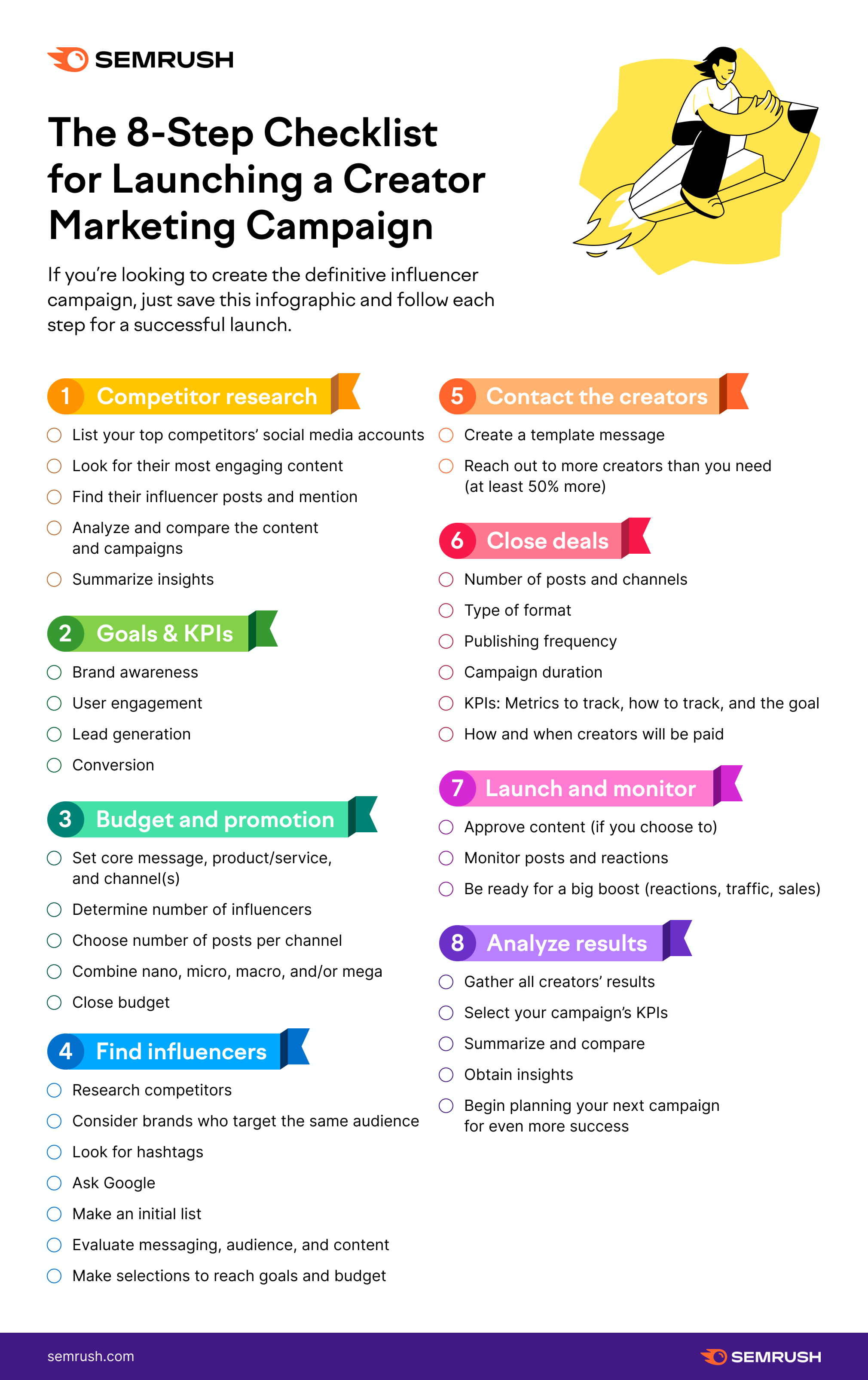
Step One: Competitor Research
Checking out the competition is a great place to begin. It will be a guiding star and help provide some industry benchmarks.
One way to begin is to make a list of your top competitors and document all of their social media profiles on a spreadsheet or Excel file. Next, create a column noting the number of followers they have. Third, spend some time analyzing their posts, and link to the ones with the most comments, likes, views, or engagements.
While this process is laborious and time-intensive, it’ll help you understand what resonates and engages their following, and gauge what works and what doesn’t in your industry. This will also help you decide on your key performance indicators (KPIs) when you review your results later on.
Research Your Competitors with the Influencer Analytics App
For a less manual approach to competitor research, try the Influencer Analytics App. It’s an influencer discovery tool that reveals insights into your competitors’ influencer budgets and performance stats.
Research your competitors by dropping in their website from the Competitor Analysis tab. It pulls historical data from YouTube and Twitch, showing the total number of influencers, brand mentions, views, and budgets.
The app also provides insights that paint the picture of your ideal influencers, such as the categories and topics they promote, the average price per creator, and the size of their following.
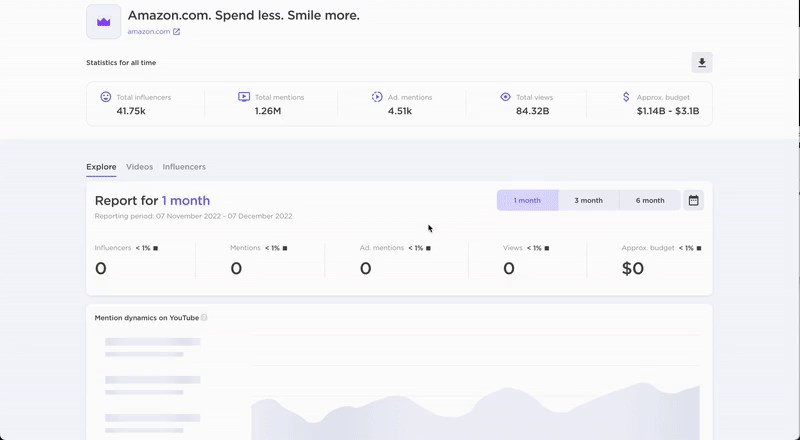
In the Video tab, you’ll see their top influencers alongside their performance stats and price:
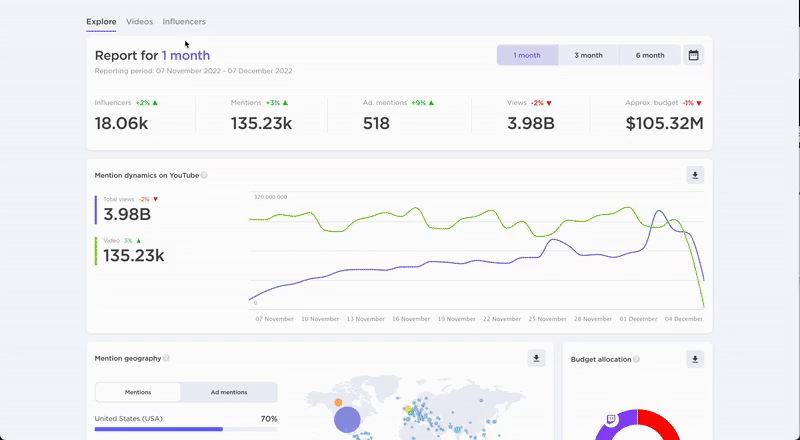
You can see all their content (both organic and sponsored), dive into their profiles, and save them to a list for future reference.
Now that you have some industry-specific competitor groundwork laid, your next step should focus on your metrics for campaign success.
Step Two: Define Your Campaign Goals and KPIs
Anything you do for the first time is a learning experience. And breaking into influencer marketing is no different.
Remember that creator marketing builds trust through relationships, which don’t happen overnight. There’s a learning curve involved. You want to create partnerships with influencers who align with your brand values and whose audience matches your target.
For this reason, we suggest you focus on brand awareness and engagement first. Rather than measuring your first campaign based on the sales outcome and your return on investment (ROI), a number of other important metrics demonstrate success in a creator marketing campaign.
Measuring Brand Awareness in Influencer Campaigns
Metrics for measuring brand awareness include increased traffic to your website and new followers on your social channels. You should also monitor any new backlinks and brand mentions (both positive and negative) to see the impact of your campaign.
Measuring Engagement in Influencer Campaigns
Engagement metrics paint a crystal clear picture of how well your campaign messaging is received by the target audience.
Metrics to track include likes and comments, shares, views and plays, and an increase in followers and reach.
Lead Generation Metrics for Influencer Campaigns
Tracking lead generation and conversions helps you gauge the success of a creator marketing campaign from the budgeting perspective. But, as previously mentioned, this should be the secondary thought at this stage.
Here you can set goals for the number of leads you’d like your campaign to gain, keeping note of the lead conversion rate and cost per lead (CPL).
Conversion Metrics for Influencer Campaigns
Establish metrics such as your desired click-through rate (CTR), your cost per conversion (CPC), and the new visitor conversion rate. Many times, creators will provide case studies and past performance metrics to set your expectations.
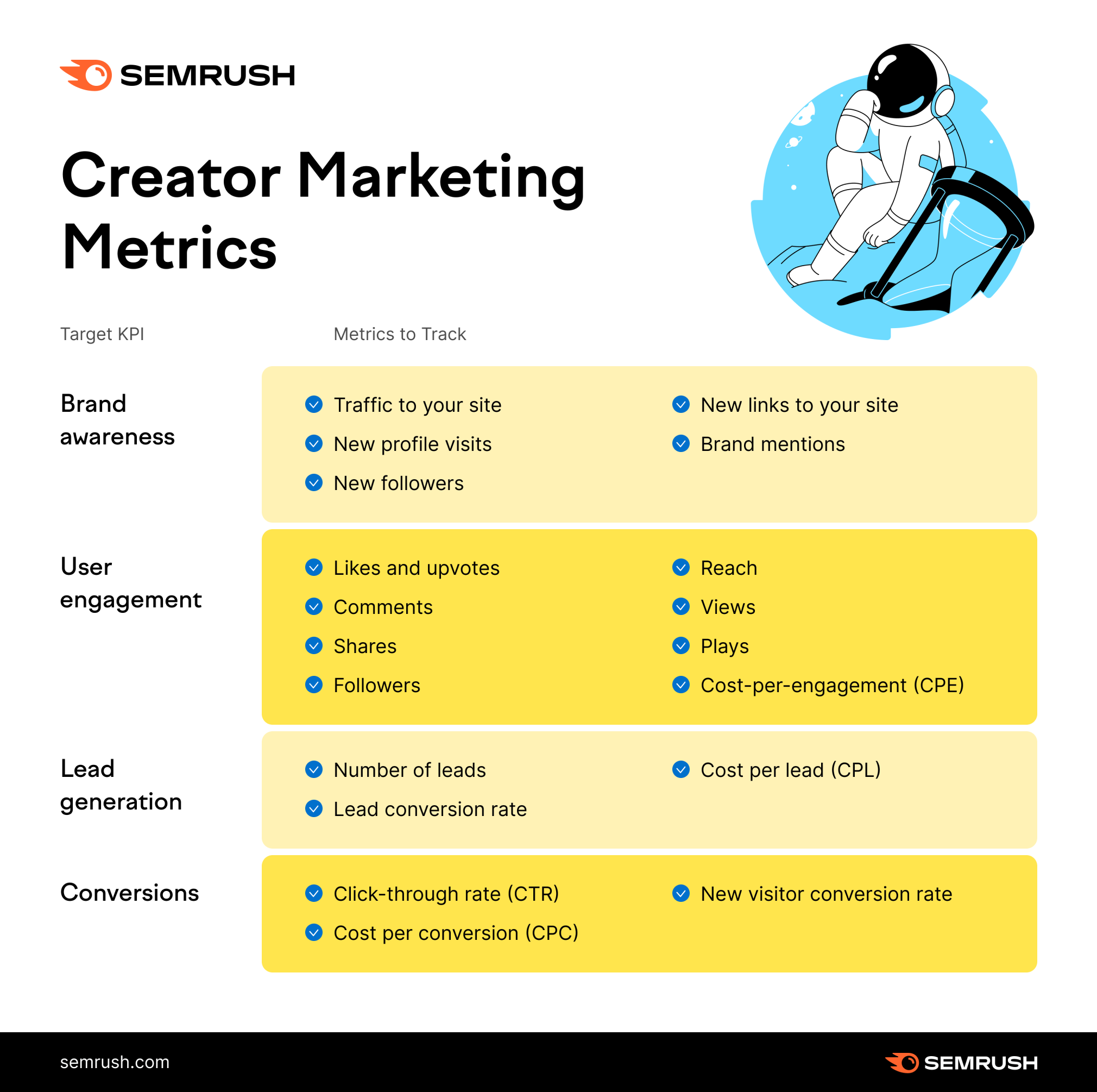
Pro Tip: Use Urchin Traffic Monitor codes (UTMs) on your promoted links to make performance tracking and attribution easier. Check out this guide on how to set them up.
Setting up these target goals will arm you with the intel to fine-tune your future influencer campaigns. To reach them, you’ll want to ensure that your brand message is conveyed in a way that positively impacts the audience and can strengthen your brand image. You’ll also want to ensure you’re working with a group of influencers who meet your expectations and budget.
Related reading: How to Measure Influencer Marketing Success & Return on Investment
Step Three: Set Your Budget and Promotion Plan
How much does it cost to tap into influencer marketing?
It depends.
You should first define your core message, identify what product or service you’re promoting, and on what channel(s) and to what audience.
It also depends on the influencers you collaborate with, and how many posts you will sponsor. While there’s no formal pricing schedule or formula, most creators will expect fair compensation based on their audience size and engagement rate.
The terminology varies, but here are four general categories of influencers to help you gauge the cost:
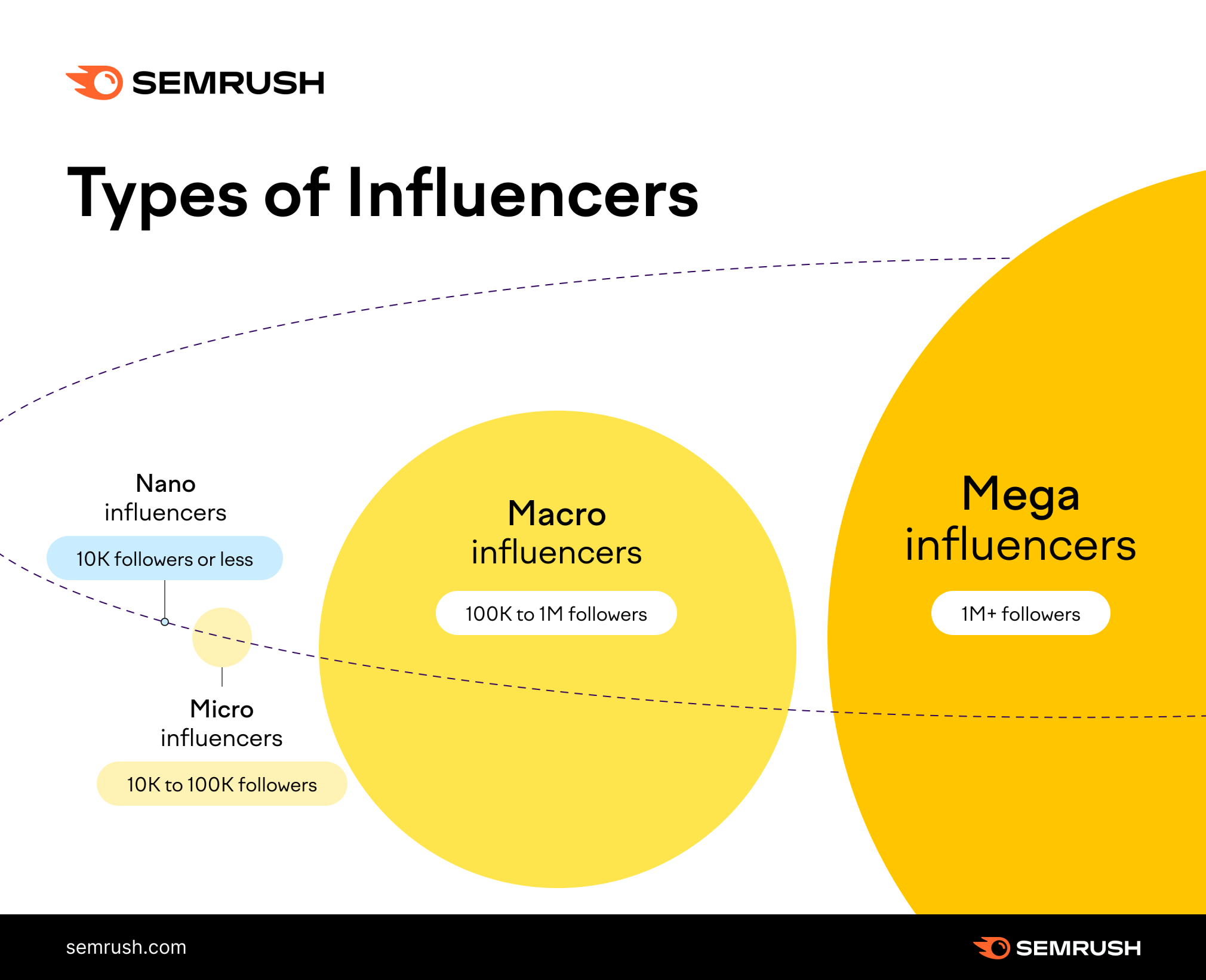
Let’s imagine that you want to use Instagram to promote a new line of soccer shoes. You’d like to target up-and-coming athletes with an inspiring message.
A mega influencer like the legendary Cristiano Ronaldo (491M followers) might make a great partnership, but with the price tag of $890K per post, it might be entirely out of your budget.
How Much Do Creators Charge Per Post?
A series of global studies show the trends in rates by platform and influencer tiers on different channels. Here are some of their findings you can bookmark for reference:
Influencer Rates on Instagram
| Type of content / Influencer Tier | Nano (500-5k followers) | Micro (5k-30k followers) | Power (30k-500k) | Celebrity (500k+ followers) |
| Instagram Post | $100 | $172 | $507 | $2,085 |
| Instagram Video | $114 | $219 | $775 | $3,138 |
| Instagram Story | $43 | $73 | $210 | $721 |
Influencer Rates on YouTube:
| Type of content / Influencer Tier | Nano (500-5k followers) | Micro (5k-30k followers) | Power (30k-500k) | Celebrity (500k+ followers) |
| YouTube Video | $315 | $908 | $782 | $3,857 |
Influencer Rates on Facebook:
| Tier | Nano Influencer (1K-10K followers) | Micro Influencer (10K-50K followers) | Mid-tier (50K-500K followers) | Macro- Influencer (500K-1M followers) | Mega Influencer (1M+ followers) |
| Price | $25-250 | $250-$1.25K | $1.25K-$12.5K | $12.5K-$25K | $25K+ |
Influencer Rates on Snapchat
For Snapchat, research from the Business of Apps published the following rates based on the number of views:
| Views (Followers Equivalent) | Price Range |
| 1K-5K | $500 |
| 5K-10K | $1K-$3K |
| 10K-20K | $3K-$5K |
| 30K-50K | $5K-$10K |
| 50K-100K | $10K-$30K |
Influencer Rates for TikTok
According to InfluencerMarketingHub, their research indicates the following rates for TikTok content creators:
| Tier | Nano Influencer (1K-10K followers) | Micro Influencer (10K-50K followers) | Mid-tier (50K-500K followers) | Macro- Influencer (500K-1M followers) | Mega Influencer (1M+ followers) |
| Price | $5-$25 | $25-$125 | $125-$1.25K | $1.25K-$2.5K | $2.5K+ |
These prices are not set in stone—they are guidelines to help you budget your promotion and assess what channels make the most sense for your brand.
How Many Influencers Should You Work With?
Rather than putting all of your eggs in one basket, plan to work with at least five influencers for your first campaign. This will give you a better understanding of how and where your messaging and targeting work best.
Remember that content creators reach different audiences on their channels, which can greatly impact your campaign outcome.
Now let’s explain how to find the best influencers for your brand.
Step Four: Find the Best Influencers for your Campaign
If you partake in social listening as an ongoing activity in your social media tasks, you probably know who the biggest players are in your industry or niche.
But if you don’t know where to start, refer to these research methods to find promising content creators.
Competitor Research
Let’s revisit our first step (researching your competitors). Add a column in your spreadsheet dedicated to tracking posts from their collaborators, noting their engagement metrics.
It’s possible that the same influencer might be open to working with your brand or product if they’ve worked with your competitor.
Build the list until you have at least 20-30 names, including their handles, contact information, and the number of followers in your spreadsheet.
Ask Google
You can also try Googling a keyword related to your industry to discover influencers. Let’s imagine you want to promote a beauty product and need to identify influencers. Just put in your target keywords and evaluate the search results.
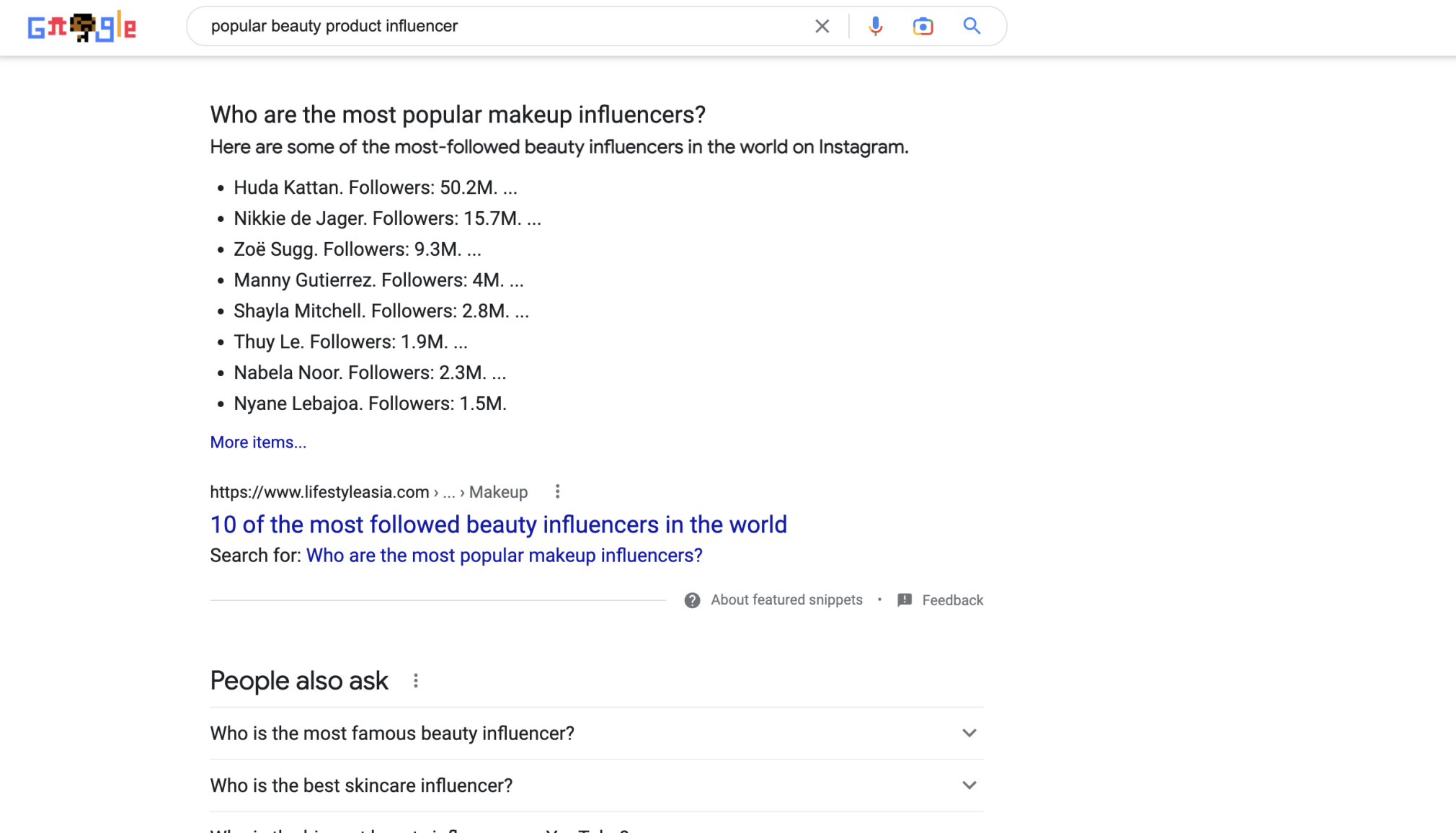
Most of these lists will already have vital information such as the number of followers, and past examples of high-performing content. Remember that audience size isn’t everything. Evaluate their posts, read the comments, and be mindful that they should align with your brand.
Look at Hashtags
Hashtags based on topics or keywords can help you spot potential creators, and you can also filter them by geography if location is essential to your campaign.
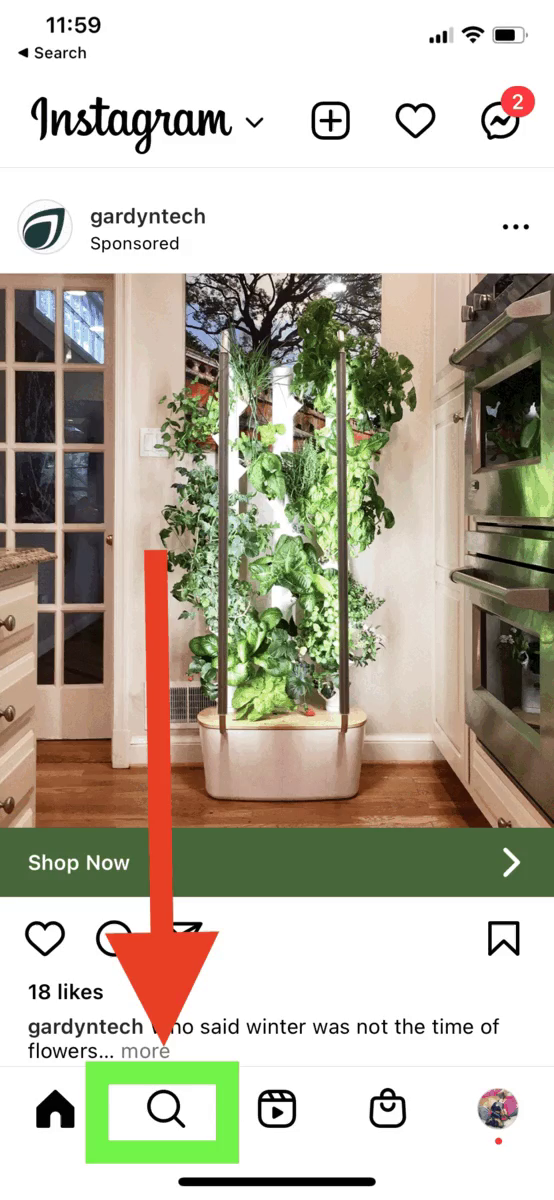
Here we found a content creator focused on travel using the hashtag discovery tool on Instagram. Repeat this process until you have a healthy list to start your outreach with.
Discover Influencers with Influencer Analytics
The Influencer Analytics App has two dedicated tools for influencer discovery.
You can find content creators with the filters tool, allowing you to search for an individual and filter them through more than 30 data point breakdowns, including:
- Country or language
- Demographics, engagement rate, likes, and subscribers
- Price and views
- Their last content published

The second tool leverages keywords to find content creators. Just enter your relevant keywords and find influencers who have mentioned those keywords in their videos, streams, or posts.
These two tools can help you narrow your search more quickly, allowing you also to estimate and forecast advertising budgets, and share your influencer lists with your colleagues or team members.
How to Evaluate Influencers
Now that you have a list of content creators, it’s time to focus on qualifying and vetting them. Here are a few key considerations:
Messaging: Take a deep dive into their posts and evaluate the tone, message, and overall philosophy.
Does their viewpoint match or align with your brand voice? Do they support a controversial topic you want to avoid?
Getting in front of a new audience to grow your brand awareness isn’t just about the numbers. It’s about getting the right brand message out there.
Audience: Unfortunately, there are a lot of fake profiles out there, including those that impersonate others. Users may do this to piggyback onto trending content and write comments that are seen by all the influencers’ followers.
This is a deceitful practice and can even contribute to social harm. Evaluate the tone and content of the comments section closely. You wouldn’t want your business to be affiliated with these negative tactics.
A creator who doesn’t align with your values or engages in controversial topics could damage your brand on an epic scale, so be sure to do your homework!
Organic vs. Sponsored Content: Users can sniff out when a content creator is promoting another product or service. That’s why having back-to-back sponsored posts should be avoided as they can negatively impact engagement rates.
Make sure your creator predominantly publishes their own content with just a few sponsored posts in between to maximize engagement.
Step Five: Reach Out and Make Contact
Now that you have a list of content creators you want to work with, you’ll need a strategy for outreach and agreeing on the terms of your engagement.
Influencers receive a high number of solicitations, so it’s important to formulate an outreach message that’s respectful, relevant, and shows you’ve done your research.
Don’t be pushy, don’t be starstruck, and don’t talk about price in your first communication.
Instead, be professional, be sincere, be brief, and be prepared to follow-up. In fact, the average open rate is 50%, and the reply rate is 20% or less in influencer outreach. So don’t hang up the towel right away if you don’t receive a response.
Aside from the monetary gain, influencers are motivated by other, more personal factors. They want to make sure the brand aligns with their values and messaging. They want to create content with resonance that engages their audience.
After all, it’s their personal brand that they worked hard to create. They won’t want to lose trust, confidence, or followers by promoting something they don’t believe in.
Example of an Influencer Outreach Message
That said, here’s a generic but effective template you can tailor for your industry-specific outreach letter.
Try to use specific examples, and speak the language of the influencer you want to work with.
Hey/ Hello [influencer name]. My name is [your name] and I’m with [brand/business name].
I’ve been following your [posts/profile] on [platform or channel] and loved your post [about topic] because [add your personal reason that adds the human element].
Like you, our [brand/business] is focused on [describe what your company and the post have in common]. If you’re interested in collaborating together, I would love to send you [a free sample/ more details/ the product].
Thanks so much, hope to hear from you!
[Your name]
Here’s how that might look in the real world:
Hey Amanda! My name is Lucy, and I’m with a company called AngelHair.
I’ve been following your story on TikTok and was inspired by your fundraiser for chemo patients. Sharing your personal story means a lot, and has helped so many going through the same journey.
Not sure if you’ve heard of us, but we’re a nonprofit dedicated to providing 100% no-cost wigs to cancer and chemo patients. If you’re interested in a collaboration, I would love to send you more details.
Thanks so much, hope to hear from you!
Lucy
Once you start getting positive responses from influencers, you’ll want to define the agreement, deliverables, and cost.
Step Six: Agree on Deliverables and Execution
Some collaborators might come back to you with a pricing schedule right away, while others might want to ask you what your budget is first and then try to negotiate.
Many brands don’t even pay for the collaboration but offer something in kind, such as mention on their social media, or a generous supply of that product or service free of cost.
This could be harmful to your brand, especially when first starting, so be sensitive and listen to the creator’s prices with respect. They’re giving you their time and expertise and deserve to be fairly compensated.
If you cannot agree on a price or if it’s far beyond your budget, don’t keep going back and forth to negotiate. This will come off as bartering and is frowned upon in the industry.
For the campaign itself, you’ll need to agree on the following:
- How many posts and which channel(s) they’ll be published on
- What type(s) of post(s), such as videos, stories, photos, takeovers, live broadcast
- Publishing frequency (such as once a month per quarter, once a week, once every two weeks)
- Campaign duration
- The approved message and creative that aligns with your brand
- Metrics to track (engagement rate, reach and impressions, and how the influencer will share these results with you)
- Tracking in place, with UTMs or branded hashtags
- How and when the creator will receive payment
Content creators are very talented individuals, and that’s why you’ve decided to work with them. At the same time, you’ll want to have all the tasks, creative, deliverables, and execution for the timeline set in stone.
You can ask for the influencer to put together the project scope or create your own agreement and send it over with your terms and conditions. Both parties must agree and sign it before commencing the work.
Step Seven: Launch and Monitor Your Influencer Marketing Campaign
After you’ve decided on all the creative elements, timelines, and have agreements and retainers taken care of—it’s time to launch your campaign!
If it’s your first time working with a content creator of significant influence, expect a big influx of activity after they hit publish.
You might not be accustomed to this, so ensure your team is monitoring the situation. You should let your customer specialist teams know that more support could be needed. A rapid surge in new users will likely need more help with your product or service than established customers.
Furthermore, expect an influx of activity on your social media channels, all of which deserve your immediate attention.
To monitor and respond to social media comments and messages in real-time, use the Social Media Inbox tool from Semrush. You can add all your owned media channels and answer comments, questions, and any direct messages you receive.
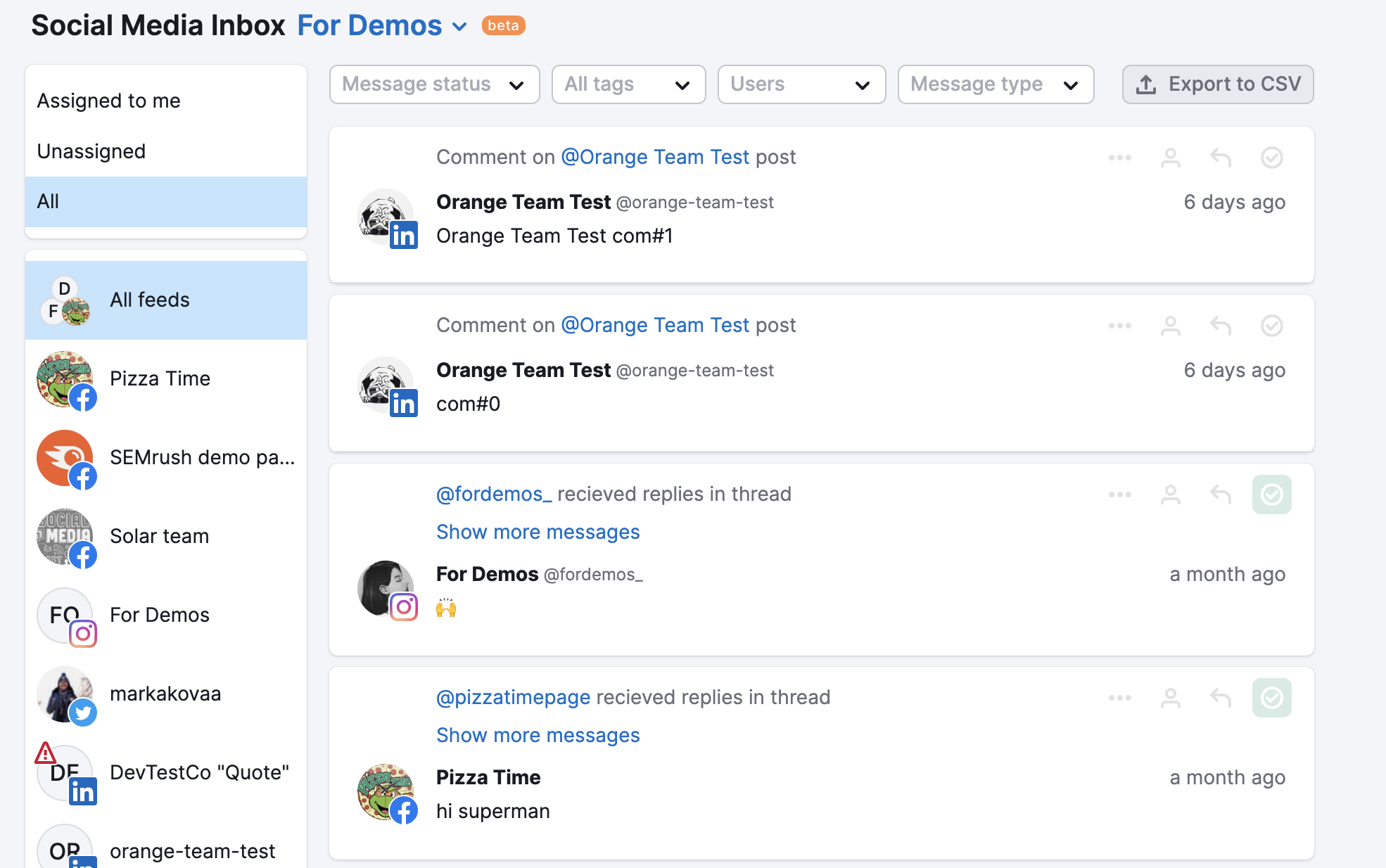
This helps you gauge the audience’s reaction to your campaign, letting you see immediately if it’s making a positive impact or if a negative response arises.
That takes us to the final step in our creator marketing checklist: reporting and analysis.
Step Eight: Analyze Campaign Results
If your campaign results met or exceeded your expectations, congratulations! You now have a solid baseline to compare your future influencer marketing success.
Pull the plug and hold the campaign if your efforts start generating a negative buzz. You don’t want it to damage your business’s reputation.
Also, if you’re not seeing growth in new followers, traffic to your website, or engagement—use this information to reshape your future approach.
Be sure to request all metrics from your collaborators and to have a wrap-up discussion reviewing what worked best, what didn’t work at all, and what recommendations they can provide.
Influencers are masters of their craft and most likely can provide helpful feedback and suggestions to improve your results. They may also want to partner with you long-term and collaborate on seasonal, topical, or industry-themed campaigns. Be professional, authentic, and open to future partnerships.
Leverage the Power of Influencer Marketing to Build Your Brand
From sourcing, budgeting, and qualifying content creators—we’ve discussed everything you need to know to get your first influencer marketing campaign off the ground.
You also have the most important metrics and KPIs to track, enabling you to fine-tune your future campaigns and optimize the process the next time around.
With social media being a perpetual shapeshifter, what works today might look very different from a strategy five years from now.
Influencer marketing is certainly here to stay, so we hope you seize the opportunity to enhance your business with the social proof that content marketing brings.
